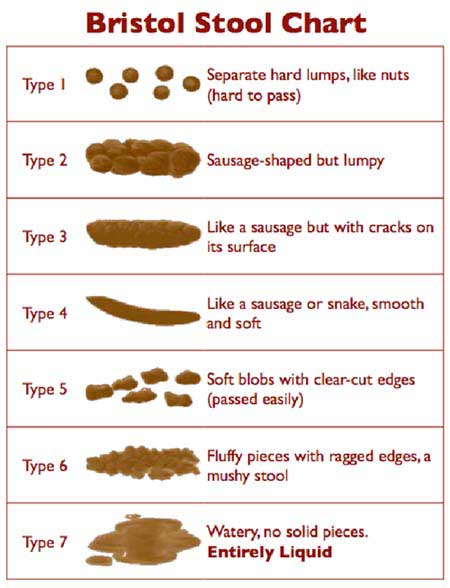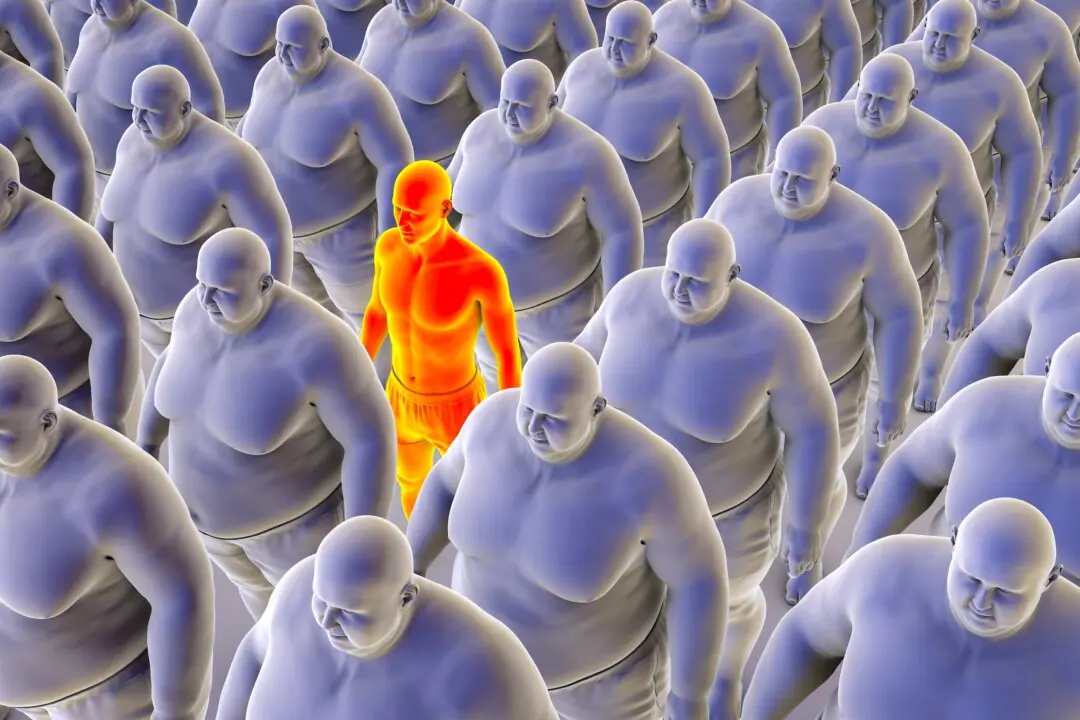STORY AT-A-GLANCE
- You can learn a great deal about your overall health by taking a look at your stool and noting its color, size, shape, consistency, odor and other features
- Your toileting habits, such as frequency of elimination and the ease with which you move your bowels, can provide additional clues to your health status
- Three bowel movements per day to three per week is considered the normal range
- If you know what to look for, you may be able to detect health problems early enough to stop them in their tracks
- Most gastrointestinal problems that lead to constipation and diarrhea can be prevented or resolved by making simple changes to your diet and lifestyle
When it comes to toileting habits, the topic is not exactly a favorite among Americans — at least for those above the age of 4. Mention poop and you can easily clear a room — or at the least, generate some unusual facial expressions, nervous laughter and wisecracks about “too much information.”
The shape, size, color and other fecal features can tell you a great deal about your overall health and how your gastrointestinal tract is functioning. It can even give you clues about serious disease processes that could be occurring, like infections, digestive problems and even cancer. Poop comes in just about all the colors of the rainbow — and please forgive me for using the words poop and rainbow in the same sentence.
What Is Normal Stool?
Your stool is about 75% water. The rest is a fetid combination of fiber, live and dead bacteria, miscellaneous cells and mucus.2 The characteristics of your stool will tell you a good deal about how happy and healthy your digestive tract is. The color, odor, shape, size and even the sound it makes when it hits the water — plus whether it’s a sinker or a floater — are all relevant information.
Look, Listen and Smell Before You Flush
What’s normal and what’s not when you look into the toilet? The following table will help you narrow down what to look for so you aren’t needlessly alarmed. Of course, there are a few signs that are cause for concern, and those are listed too. If you have a change in stools accompanied by abdominal pain, please report this to your physician.3Healthy Stool
- Medium to light brown
- Smooth and soft, formed into one long shape and not a bunch of pieces
- About one to two inches in diameter and up to 18 inches long
- S-shaped, which comes from the shape of your lower intestine
- Quiet and gentle dive into the water. It should fall into the bowl with the slightest little “whoosh” sound — not a loud, wet cannonball splash that leaves your toosh in need of a shower
- Natural smell, not repulsive (I’m not saying it will smell good)
- Uniform texture
Unhealthy Stool
- Stool that is hard to pass, painful or requires straining
- Hard lumps and pieces, or mushy and watery, or even pasty and difficult to clean off
- Narrow, pencil-like or ribbon-like stools can indicate a bowel obstruction or tumor — or worst case, colon cancer. Narrow stools on an infrequent basis are not so concerning, but if they persist, definitely call your physician
- Black, tarry stools or bright red stools may indicate bleeding in the gastrointestinal (GI) tract. Black stools can also come from certain medications, supplements or consuming black licorice. If you have black, tarry stools, it’s best to be evaluated by your health care provider
- White, pale or gray stools may indicate a lack of bile, which may suggest a serious problem (hepatitis, cirrhosis, pancreatic disorders or possibly a blocked bile duct), so this warrants a call to your physician. Antacids may also produce white stool
- Presence of undigested food. This is more of a concern if accompanied by diarrhea, weight loss or other changes in bowel habits
- Floaters or splashers
- Increased mucus in stool can be associated with inflammatory bowel disease like Crohn’s disease, or ulcerative colitis, or even colon cancer, especially if accompanied by blood or abdominal pain
- A malabsorptive disorder
- Celiac disease
- Crohn’s disease
- Chronic pancreatitis
- Cystic fibrosis
How Often Should You Move Your Bowels?
Normal bowel habits vary. When we talk about regularity, what we’re really talking about is what’s regular for you. Three bowel movements per day to three per week is considered the normal range.What’s more important than frequency is the ease with which you move your bowels. If you need to push or strain, something is off. Moving your bowels should take no more effort than urinating or passing gas. The thing to watch for is a sudden change in your bowel habits.
Constipation and Diarrhea
The average body takes between 18 and 72 hours to convert food into poop and pass it on out. When this time is significantly shortened, the result is diarrhea because your intestine doesn’t have time to absorb all the water. Conversely, when transit time is lengthened, you may end up constipated because too much water has been absorbed, resulting in hard, dry stools.Constipation is defined as passing hard, dry stools that you have to strain to move, and it’s typically accompanied by decreased frequency of defecation. Straining is not normal, nor is experiencing feelings of incomplete elimination, bloating, crampiness or sluggishness after going number two. If you’re over the age of 65, your risk of becoming constipated increases significantly.
Common Causes of INCREASED Bowel Frequency/Diarrhea8

Common Causes of DECREASED Bowel Frequency/Constipation9

How to Score a Home Run With Your Bowel Movements
Most gastrointestinal problems can be prevented or resolved by making simple changes to your diet and lifestyle. If you aren’t achieving poo perfection, or if you don’t feel right, then look at the following factors and consider making a few changes. These strategies will help reverse constipation or diarrhea, in addition to helping prevent recurrences.- Remove all sources of gluten from your diet. The most common sources are wheat, barley, rye, spelt and other grains
- Eat a diet that includes whole foods, such as fresh, organic vegetables and fruits that provide good nutrients and fiber; most of your fiber should come from vegetables, not grains
- Avoid artificial sweeteners, excess sugar (especially fructose), chemical additives, MSG, excessive amounts of caffeine and ultraprocessed foods, as they are all detrimental to your gastrointestinal (and immune) function
- Boost your intestinal flora by eating fermented foods such as sauerkraut, pickles and kefir (if you tolerate dairy) that have naturally occurring probiotics
- Try increasing your fiber intake; good options include organic psyllium seed husk, artichoke, baked sweet potato with the peel intact, spinach, broccoli, Brussels sprouts, cauliflower and many other vegetables.
My recommendation for daily fiber intake is 25 to 50 grams per 1,000 calories consumed
- Make sure you stay well hydrated with fresh, pure water
- Get plenty of exercise daily
- Avoid medications such as painkillers like codeine or hydrocodone, which will slow your bowel function; antidepressants and antibiotics can also cause a variety of GI disruptions
- Address emotional challenges with tools like the Emotional Freedom Techniques (EFT)
- Consider squatting instead of sitting to move your bowels. Squatting straightens your rectum, relaxes your puborectalis muscle and encourages the complete emptying of your bowel without straining.
An inexpensive foot stool can help you achieve the proper squatting position while keeping you stable
Consider a Bidet
As a practical and affordable alternative to toilet paper, you might want to try a bidet. Bidets are the norm in Europe — it’s the rare bathroom that is found without one. Once you experience a bidet, you'll probably never go back to toilet paper. A bidet is refreshing in a way toilet paper will never be, is gentler and less irritating than wiping with paper, and reduces hand contamination.Whenever I travel it is one of the items that I miss most from my home, and nearly everyone that I know who has one just loves it. A bidet pays for itself in no time with the money saved on toilet paper, as well as helping save valuable environmental resources.
You still need a sheet or two of toilet paper to dry yourself, but that is a tiny fraction of what you would need to clean yourself. More importantly, a bidet cleans your bottom far more effectively than dry toilet paper. They are easy to install, as no plumber is required.
Sources and References
- 1 Daily Mail March 22, 2018
- 2 EverydayHealth
- 3 Ezine Articles
- 4 MedlinePlus
- 5 National Institute of Diabetes and Digestive and Kidney Diseases, Symptoms & Causes of Gas in the Digestive Tract
- 6 Vox December 4, 2014
- 7 The New York Times August 2, 2005
- 8 Mayo Clinic, Frequent Bowel Movements, Symptoms
- 9 Cleveland Clinic, Constipation





